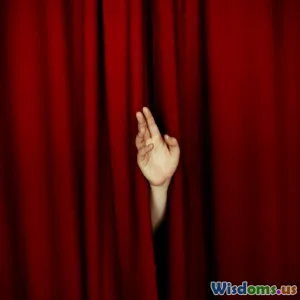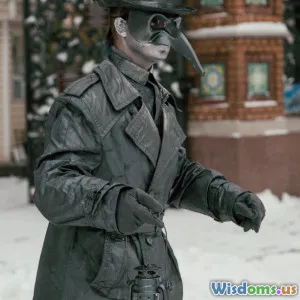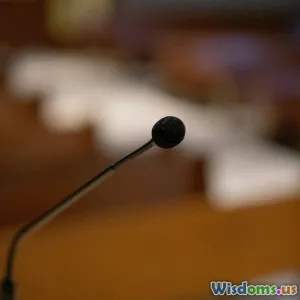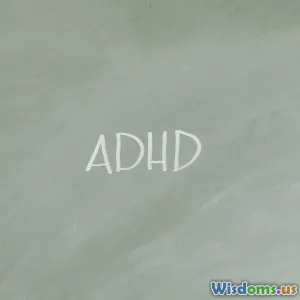
Magic: A Journey Through History and Art
7 min read Explore the captivating evolution of magic through history and art, revealing the secrets behind stage mysteries and illusions. (0 Reviews)
Magic: A Journey Through History and Art
Magic has enthralled and mystified humanity for millennia, serving not only as entertainment but also as a mirror to our cultural evolutions, spiritual yearnings, and artistic expressions. From ancient temples to modern theaters, the art of magic has evolved into a sophisticated blend of history, showmanship, and psychological craft. This article embarks on a comprehensive journey through the captivating story of magic, focusing on its historical roots and its enduring relationship with art and stage mysteries.
Introduction: The Spellbinding Origins of Magic
The allure of magic lies in its defiance of the ordinary: the ability to manipulate perception and create wonder. While contemporary audiences see magic as stage illusions performed with slick props and dramatic flair, its roots dig deep into antiquity, intertwined with mysticism, religion, and social ritual. Early magic blurred the line between belief and deception, often used for spiritual or societal influence.
Magic’s history and artistic portrayal reflect humanity’s communal need for mystery and inspiration. By understanding how magic developed, we gain insights into the evolution of performance arts, psychology, and culture itself.
Ancient Foundations: Rituals, Illusions, and Myth
The earliest incarnations of magic were not for mere entertainment but for invoking divine intervention or manipulating unseen forces. In ancient Egypt, priests performed miraculous acts that today could be classified as illusions — including conjuring snakes or transforming objects — which reinforced their religious authority.
Similarly, ancient Chinese records described magicians performing astonishing feats, such as the famous "shadow play" illusions dating back over 2000 years. The Greeks and Romans celebrated performers called "sleight-of-hand artists," but magic was also conflated with witchcraft and the occult, which sometimes led to persecution.
Example: The Egyptian “ Cups and Balls”
Among the oldest recorded magic tricks is the Cups and Balls, a routine still performed by magicians today. The ancient Egyptian papyri include instructions for early versions of this illusion, a testament to how enduring and adaptable these methods have been.
Magic in the Middle Ages: From Mysticism to Mystery Plays
During the Middle Ages, magic was both feared and celebrated in vastly different contexts. While church authorities condemned foul sorcery, folk magicians, alchemists, and tinkers continued magical performances socially. The concept of magic began shifting from divine power towards entertainment and amazement.
Mystery plays, performed in medieval Europe, incorporated elements of illusion to depict biblical stories. These communal spectacles blurred theatrical art and ritualistic magic, influencing future stagecraft.
The Renaissance Enlightenment: The Birth of Stage Magic
A critical turning point came in the Renaissance, when scientific inquiry prioritized rational explanations yet simultaneously fueled curiosity for spectacle and enchantment. Magic began to establish itself as a distinct performance art rather than occult practice.
Innovators such as Jean Eugène Robert-Houdin, often termed the "father of modern magic," revolutionized stage magic in the 19th century. He introduced elegant stage costumes, mechanical devices, and refined showmanship, transforming magic from street performance to theater art. Robert-Houdin’s influence is profound — his methods showed that magic depended not just on tricks, but on narrative and presentation.
Modern Magic and Stage Mysteries
Today’s magic performances combine technology, psychology, and storytelling. Illusions such as David Copperfield's flying or Dynamo’s close-up feats amaze audiences through a fusion of classical technique and modern innovation.
The Art of Deception: Psychological Misdirection
Modern magicians rely heavily on psychological principles — exploiting how human attention works to create convincing illusions. The science of perception, cognitive bias, and memory are keystones in constructing believable magic acts.
Example: Penn & Teller
Penn & Teller exemplify contemporary magic's artistic intellect by blending humor, skepticism, and explanation. Their ability to reveal parts of their tricks while maintaining awe challenges audiences to rethink the relationships between belief, deception, and entertainment.
Magic as an Artistic Medium
Beyond spectacle, magic interfaces deeply with visual arts, literature, and film. Artists like Salvador Dalí and magicians such as Harry Houdini became cultural icons embodying surreal and mysterious themes.
Magic’s symbolic elements — transformation, invisibility, and impossible feats — inspire countless creative expressions, underscoring deep human fascinations with the unknown and the transcendental.
Conclusion: The Enduring Power of Magic
Magic remains a unique art form that engages audiences by transcending everyday experience, drawing from rich historical traditions and artistic influences. Its journey from ancient rituals to present-day illusions highlights how the line between reality and fantasy is artfully blurred.
Whether as a tool of spiritual influence, a theatrical phenomenon, or a psychological practice, magic continues to captivate, challenge, and inspire. As technology and artistry evolve hand in hand, the enchantment of magic promises to endure — constantly reinvented but eternally wondrous.
References and Further Reading:
- Tompkins, J. (2011). The Secret History of Magic: The True Story of the Deceptive Art.
- Dawes, A. (2002). The Encyclopedia of Magic and Magicians.
- Bingham, R. (1999). Houdini: The Man Who Walked Through Walls.
- Psychological studies on misdirection and perception dynamics in magic, Cognition & Emotion journal.
Explore magic’s past and artistry to unlock the mysteries underpinning one of humanity’s most fascinating performances.
Rate the Post
User Reviews
Other posts in Cultural Studies
Popular Posts
















